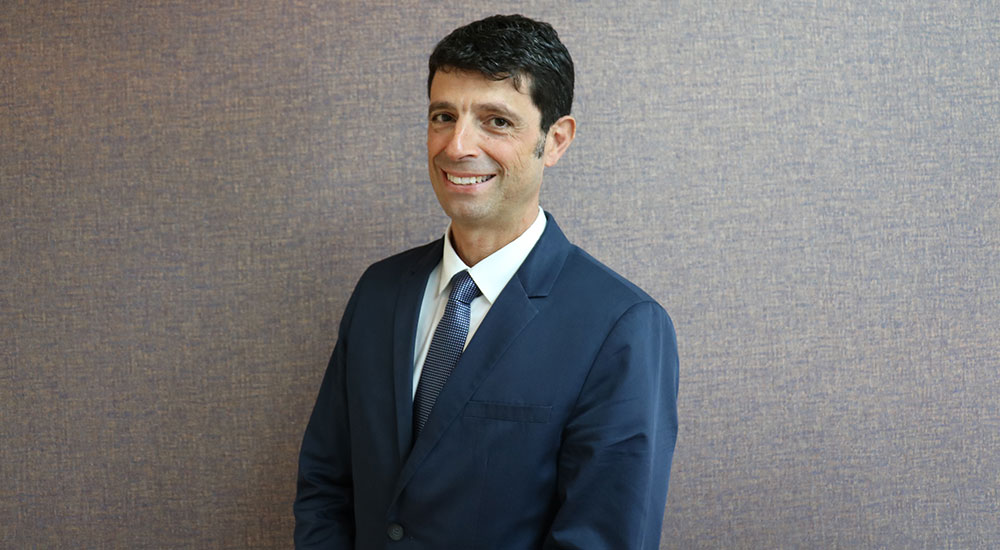Travelling to Mars can have sight threatening consequences for passengers

As the UAE moves ahead with ambitious plans to expand its space industry and one day send a man to Mars, specialists at Moorfields Eye Hospital Dubai have assessed the impact space travel can have on astronauts’ vision. Major Hazza Al Mansouri, the first Emirati astronaut, spent eight days onboard the International Space Station in October as part of a historic mission that will have a profound impact on the development and growth of the country’s space, research, development and technology sector.
As well as writing his name in the record books and inspiring a generation to follow in his footsteps, Maj Al Mansouri’s achievements have opened up a unique debate on how people can live and work in space.
How can spaceflight impact spaceflight an astronaut’s eyesight?
On Earth, gravity acts on our bodies. Blood pumped by the heart to the legs is pumped upwards by the venous system to avoid excessive fluids in the lower part of the body. This system works in microgravity as well and makes fluids accumulate on the upper part of the body. There is an excess of fluids in the head, which we can see in the puffy faces of astronauts when they come back to Earth. This effect is called Cephalad Fluid Shift and has been found in around 60% of astronauts, and more frequently in those who take part in missions longer than a month.
In 1989, after a six-month mission on the International Space Station, most of the astronauts reported vision problems and developed visual changes including optic disc swelling, globe flattening, choroidal thickening with folds, retinal nerve fibre layer infarcts and hyperopic shifts in refraction. There was especially a decrease in near vision. Less frequently observed symptoms also include visual scotomas and headaches. Some astronauts have reported nonspecific mild headaches but no changes in best corrected visual acuity or colour vision have been observed.
Once astronauts return to gravity, most of the hyperopic shifts gradually resolve in several weeks to months although there are descriptions of few permanent cases. The same thing seems to happen with choroidal folds and optic disc swelling. Most of them gradually subside and resolve but some remain unchanged, even after two years on Earth. Long lasting optic disc swelling may lead to visual field loss but there is no case that resulted thus far.
Under normal circumstances, cerebrospinal fluid is important for cushioning the brain and spinal cord, while also distributing nutrients around the body and helping with the removal of waste. There is a balance between its production and its removal to keep a constant volume and pressure. The syndrome initially was called Visual Impairment Intracranial Pressure, VIIP, as it was thought to be a direct result of elevated intracranial pressure, secondary to increased volume of cerebrospinal fluid.
But not all the studied cases where lumbar puncture was done had abnormal intracranial pressure levels. This suggests other possible mechanisms, for example cephalad fluid shift, increased levels of CO2 that induce vascular malfunction, or genetic predisposition. The syndrome more recently has been termed spaceflight-associated neuro-ocular syndrome, SANS, by NASA.
The cephalad fluid shift may lead to increased intracranial volume and/or pressure that is affecting the optic nerve sheaths, causing optic disc swelling and globe flattening. There is also a venous congestion that may delay the outflow of cerebrospinal fluid and create the choroidal congestion and thickening that could add to axial shortening and the observed hyperopic shift. Optic nerve swelling and increased intracranial pressure also appear in another pathology called Idiopathic Intracraneal Hypertension but this also involves frequent and intense headaches, tinnitus, transient visual obscurations, nausea and vomiting. These are typically absent in SANS.
A second hypothesis is that long term exposure to microgravity leads to alterations in the cerebrospinal fluid outflow leading to a combination of venous and lymphatic stasis that may contribute to the optic nerve sheath compartment syndrome in the presence of only minimal increases of intracranial pressure. This may persist in some patients long after returning to Earth. Both mechanisms may act together.
Although few cases have not removed the hyperopic shift and the optic disc swelling after returning to Earth, no visual damage has been observed. But the syndrome may be chronic in longer space missions. Chronic optic disc swelling may lead to decreased visual field and low vision and chronic increased intracranial pressure may lead to decreased mental abilities, confusion, double vision, shallow breathing, seizures, loss of consciousness and finally coma.
To treat the possible hyperopic shift, astronauts are now given Space Anticipation Glasses in case they develop near vision problems, more common in older than 40 years. Simulating gravity by creating relative lower body negative pressure can decrease intracranial pressure but it still has to be applied during spaceflight. No drug, such as acetazolamide, or surgery has been found to be successful in the treatment of this condition and investigations are still ongoing to find a solution to this sight threatening condition before we launch longer space missions, like a journey to Mars.




